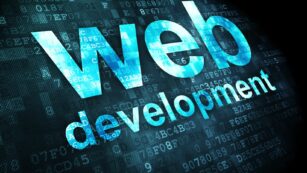In the digital age, developing web apps has become a cornerstone for businesses aiming to thrive online. With the world increasingly moving towards a more interconnected online ecosystem, the demand for robust, scalable, and efficient web applications is at an all-time high. This surge in demand highlights the need for developers to stay abreast with the latest trends, tools, and technologies in web app development.
Developing Web Apps
Key Technologies and Frameworks
Selecting appropriate technologies and frameworks is a critical step in developing web apps. This decision impacts not only the development process but also the app’s future scalability, functionality, and maintenance. Here, we delve into several leading technologies and frameworks that stand out in the landscape of web app development.
Frontend Technologies
 For the client-side or frontend development, technologies such as HTML, CSS, and JavaScript remain foundational. Frameworks like React, Angular, and Vue.js offer comprehensive solutions to create dynamic and responsive user interfaces. React, developed by Facebook, simplifies the creation of interactive UIs with its component-based architecture. Angular, from Google, provides a robust framework for developing scalable web applications with a rich set of features. Vue.js, known for its progressive framework, is acclaimed for its adaptability and ease of integration into projects of any scale.
For the client-side or frontend development, technologies such as HTML, CSS, and JavaScript remain foundational. Frameworks like React, Angular, and Vue.js offer comprehensive solutions to create dynamic and responsive user interfaces. React, developed by Facebook, simplifies the creation of interactive UIs with its component-based architecture. Angular, from Google, provides a robust framework for developing scalable web applications with a rich set of features. Vue.js, known for its progressive framework, is acclaimed for its adaptability and ease of integration into projects of any scale.
Backend Technologies
On the server-side, Node.js has emerged as a leading technology due to its non-blocking, event-driven architecture, which is particularly suited for building scalable network applications. Other popular backend technologies include Django, a high-level Python Web framework that encourages rapid development and clean, pragmatic design, and Ruby on Rails, a server-side web application framework written in Ruby that emphasizes convention over configuration.
Databases and Storage Solutions
Choosing the right database technology is crucial for the performance and reliability of web apps. Relational databases like PostgreSQL and MySQL offer robust solutions for complex queries and transactions. Meanwhile, NoSQL databases such as MongoDB provide flexibility in handling large volumes of unstructured data, making them ideal for scalable applications.
DevOps and Cloud Solutions
 DevOps practices, coupled with cloud solutions like AWS, Google Cloud, and Microsoft Azure, facilitate continuous integration and deployment, enhancing the agility of the development process. These platforms offer a multitude of services that support the hosting, scaling, and monitoring of web apps, ensuring high availability and performance.
DevOps practices, coupled with cloud solutions like AWS, Google Cloud, and Microsoft Azure, facilitate continuous integration and deployment, enhancing the agility of the development process. These platforms offer a multitude of services that support the hosting, scaling, and monitoring of web apps, ensuring high availability and performance.
The landscape of technologies and frameworks for developing web apps is vast and continuously evolving. Developers must stay informed about the latest trends and tools to choose the most suitable options for their projects. By leveraging the right combination of technologies and best practices, businesses can develop robust, efficient, and scalable web apps that meet the demands of the digital age.
Planning Your Web App
Define the App’s Purpose
Understanding the core purpose of your web app is essential. It guides the design and development phases and ensures that the app meets business objectives and user needs. Whether it’s to improve customer engagement, streamline internal processes, or offer a new service, having a clear purpose impacts every decision in the development journey.
Know Your Target Audience
Identifying the target audience shapes the app’s design, functionality, and user experience. Developers must understand the audience’s needs, preferences, and pain points to create a web app that provides value and enhances user satisfaction. Detailed audience research helps in tailoring features that resonate with users’ expectations.
Map Out the Functionality
 Outlining the web app’s functionality is crucial for setting the project’s scope. Developers need to list the features and capabilities that the app will offer, prioritizing them based on the app’s purpose and user needs. This step ensures that the team focuses on developing essential functionalities first, aligning with project goals and timelines.
Outlining the web app’s functionality is crucial for setting the project’s scope. Developers need to list the features and capabilities that the app will offer, prioritizing them based on the app’s purpose and user needs. This step ensures that the team focuses on developing essential functionalities first, aligning with project goals and timelines.
Following these planning steps, developers are better equipped to create efficient web apps that satisfy user needs and business goals. Planning sets the foundation for successful development, integrating the latest technologies and practices, to meet the demands of the digital age.
Database Selection
Selecting the appropriate database technology plays a critical role in web app performance. PostgreSQL, MySQL, and MongoDB are leading choices, each with their own strengths. PostgreSQL is renowned for its compliance with SQL standards and support for complex queries. MySQL, widely used for its reliability and ease of use, suits a wide range of applications.

